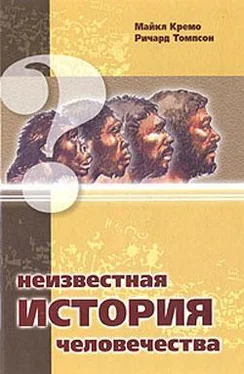Ingalls, A. G. (1940) The Carboniferous mystery. Scientific American. 162: 14.
Irving, W. N. (1971) Recent early man research in the north. Arctic Anthropology.8(2): 68‑82.
Irwin‑Williams, C. (1978) Summary of archaeological evidence from the Valsequillo region, Puebia, Mexico. In Bowman, D. L., ed. Cultural Continuity in Mesoamerica. London, Mouton, pp. 7‑22.
Irwin‑Williams, C. (1981) Comments on geologic evidence forage of deposits at Hueyatlaco archaeological site, Valsequillo, Mexico. Quaternary Research, 16: 258.
Isaac, G.L.(1978) The archaeological evidence for the activities of early African hominids. In Jolly, C. J., ed. Early Hominids of Africa. London, Duckworth, pp. 219–254.
Issel, A. (1868) Resume des recherches concernant 1'anciennete de 1'homme en Ligurie. Congres International d'Anthropologie et d'ArcheologiePrehistoriques, Paris 1867, Compte Rendu, pp. 75‑89. (*)
Issel, A. (1889) Cenni sulla giacitura dello scheletro umano recentmente scoperto nel pliocene di Castenedolo. Bullettino di Paletnologia Italiana, 15: 89‑109. (*)
Jacob, К., Jacob, C., and Shrivastava, R. N. (1953) Spores and tracheids of vascular plants from the Vindhyan System, India: the advent of vascular plants. Nature, 172: 166–167.
Jacob, T. (1964) A new hominid skull cap from Pleistocene Sangiran. Anthropologica, New Series, 6: 97‑104.
Jacob, T. (1966) The sixth skull cap of Pithecanthropus erectus. American Journalof Physical Anthropology, 25: 243–260.
Jacob, T. (1972) The absolute age of the Djetis beds at Modjokerto. Antiquity46: 148.
Jacob, T. (1973) Palaeoanthropological discoveries in Indonesia with special reference to finds of the last two decades. Journal of Human Evolution, 2: 473–485.
Jacob, Т., and Curtis, G. H. (1971) Preliminary potassium‑argon dating of early man in Java. Contribution of the University of California Archaeological Research Facility. 12: 50.
Jessup.M. К. (1973) The Caseforthe UFO. Garland, Texas, Uaro Manufacturing Company.
Jia, L. (1975) The Cave Home of Peking Man. Beijing, Foreign Languages Press.
Jia, L. (1980) Early Man in China. Beijing, Foreign Languages Press.
Jia, L. (1985) China's earliest Palaeolithic assemblages. In Wu, R., and Olsen, J. W., eds. PalaeoanthropologyandPalaeolithic Archaeology of the People'sRepublic of China. Orlando, Academic Press, pp. 135–145.
Jimison, S. (1982) Scientists baffled by space spheres. Weekly World News, July 27.
Johanson, D. C. (1976) Ethiopia yields first 'family' of man. National Geographic.] 50: 790‑Sl.
Johanson, D.C., and Coppens, Y. (1976) A preliminary anatomical description of the first Plio‑pleistocene hominid discoveries in the Central Afar, Ethiopia. American Journal of Physical Anthropology, 45: 217–234.
Johanson, D. С., and Edey, M. A. (1981) Lucy: The Beginnings of Humankind. New York, Simon and Schuster.
Johanson, D. C„Masao. F. T„Eck. G. G., White, T. D., Walter, R. C., Kimbel, W. H., Asfaw, В., Manega, P., Ndessokia, P., and Suwa, G. (1987) New partial skeleton of Homo habilis from Olduvai Gorge, Tanzania. Nature, 327: 205 – 209.
Johanson, D. C„and Shreeve, J. (1989) Lucy's Child. New York, William Morrow.
Johanson, D. C., and White, T. D. (1979) A systematic assessment of the early African hominids. Science. 203: 321–330.
Jones, E. (1953) The Life and Work of Freud. Vol. 1. New York, Basic Books.
Josselyn, D. W. (1966) Announcing accepted American pebble tools: the Lively Complex of Alabama. Anthropological Journal of Canada, 4(1): 24‑31.
Kahike, H. (1961) On the complex Stegodon‑Ailuropoda fauna of southern China and the chronological position of Gigantopithecus blacki von Koenigswald. Vertebrata Palasiatica, 5(2): 83‑108.
Keith, A. (1928) The Antiquity of Man. Vol. 1. Philadelphia, J. B. Lippincott.
Keith, A. (1931) New discoveries relating to the antiquity of man. New York, W. W. Norton.
Keith, A. (1935) Review ofTTie Stone Age Races of Kenya, by L. S. B. Leakey. Nature, 135: 163–164.
Kennedy, G. E. (1983) Femoral morphology m Homo erectus. Journal of HumanEvolution, 72. 587–616.
Klaatsch, H. (1907) Review of La question de I'homme tertiaire by L. Mayet. Zeitschrift fur Ethnologic, 39: 765–766. (*)
Klein, C. (1973) Massif Armoricain et Bassin Parisien. Strasbourg, Association des Publications pres les Universites de Strasbourg. 2 vols.
Kounnisky, J., ed. (1977) Illustrated Encyclopedia of Minerals and Rocks. London, Octopus.
Krantz.G. S. (1975) An explanation for the diastema of Javan erectu.? skull IV. In Tuttle, R. H., ed. Paleoanlhropology: Morphology and Paleoecology. The Hague, Mouton, pp. 361–370.
Krantz, G. S. (1982) Review of Halpin, M., and Ames, M. M., eds. ManlikeMonsters on Trial: Early Records and Modern Evidence. Cryptowology.I: 94‑100.
Krantz, G. S. (1983) Anatomy and dermatoglyphics of three Sasquatch footprints. Cryptowology, 2: 53‑81.
Kurten, B. (1968) Pleistocene Mammals of Europe. Chicago, Aldine.
Laing, S. (1893) Problems of the Future. London, Chapman and Hall.
Laing, S. (1894) Human Origins. London, Chapman and Hall.
Latimer, В., and Lovejoy, С. О. (1990а) Hallucial metatarsal joint in Australopithecus afarensis. American Journal of Physical Anthropology, 82: 125–133.
Latimer, В., and Lovejoy, C. 0. (1990b) Metatarsophalangeal joint of Australopithecus afarensis. American Journal of Physical Anthropology, 83: 13‑23.
Latimer, В., Ohman, J. C., and Lovejoy, C. O. (1987) Talocrural joint in African hominoids: implications for A ustralopithecus afarensis. American Journal ofPhysical Anthropology, 74: 155–175.
Laussedat, A. (1868) Sur unc machoire de Rhinoceros portant des entailles profondes trouvee a Billy (Allier), dans les formations calcaires d'eau douce de la Limagne. Comptes Rendus de I'Academie des Sciences, 66: 752–754. (*)
Le Gros Clark, W. E., and Campbell, B. G. (1978) The Fossil Evidence for HumanEvolution. Chicago, University of Chicago.
Leakey, L. S. B. (1928) The Oldoway skull. Nature, 121: 499–500.
Leakey, L. S. B. (1931) The Stone Age Cultures of Kenya Colony. Cambridge, Cambridge University.
Leakey, L. S. B. (1932a) The Oldoway human skeleton. Nature, 129: 721–722.
Leakey, L. S. B. (1932b) The Oldoway human skeleton. Nature. 130: 578.
Leakey, L. S. В. (1935) The Stone Age Races of Kenya. London, Oxford University Press.
Leakey, L. S. B. (1936) Fossil human remains from Kanam and Kanjera, Kenya colony. Nature, 138: 643.
Leakey, L.S. B. (1960a) Recent discoveries at Olduvai Gory. Nature, ] 88: 1050–1052.
Leakey, L. S. B. (1960b) Finding the world's earliest man. National Geographic, 118: 420–435.
Leakey, L. S. В. (1960с) The origin of the genus Homo. In Tax, S., ed. Evolutionafter Darwin. Vol. II. Chicago, Chicago University.
Leakey, L. S. B. (1960d)Adam 's Ancestors, 4th edition. New York, Harper& Row.
Leakey, L. S. B. (1968) Bone smashing by Late Miocene Hominidae. Nature, 218: 528–530.
Leakey, L. S. B. (1971) Homo sapiens in the Middle Pleistocene and the evidence of Homo sapiens' evolution. In Bordes, F, ed. The Origin of Homo sapiens. Paris, Unesco, pp. 25‑28.
Читать дальше












